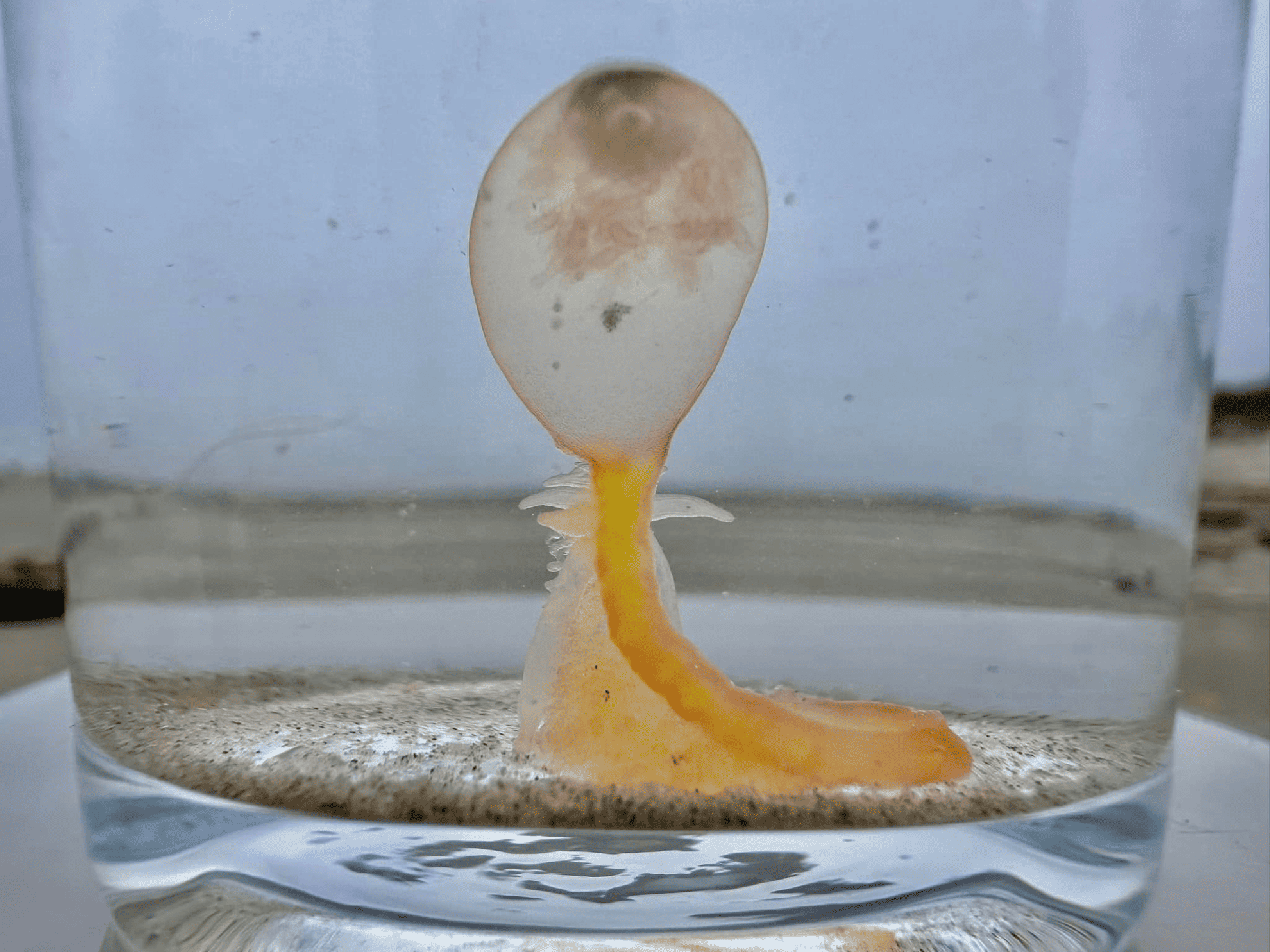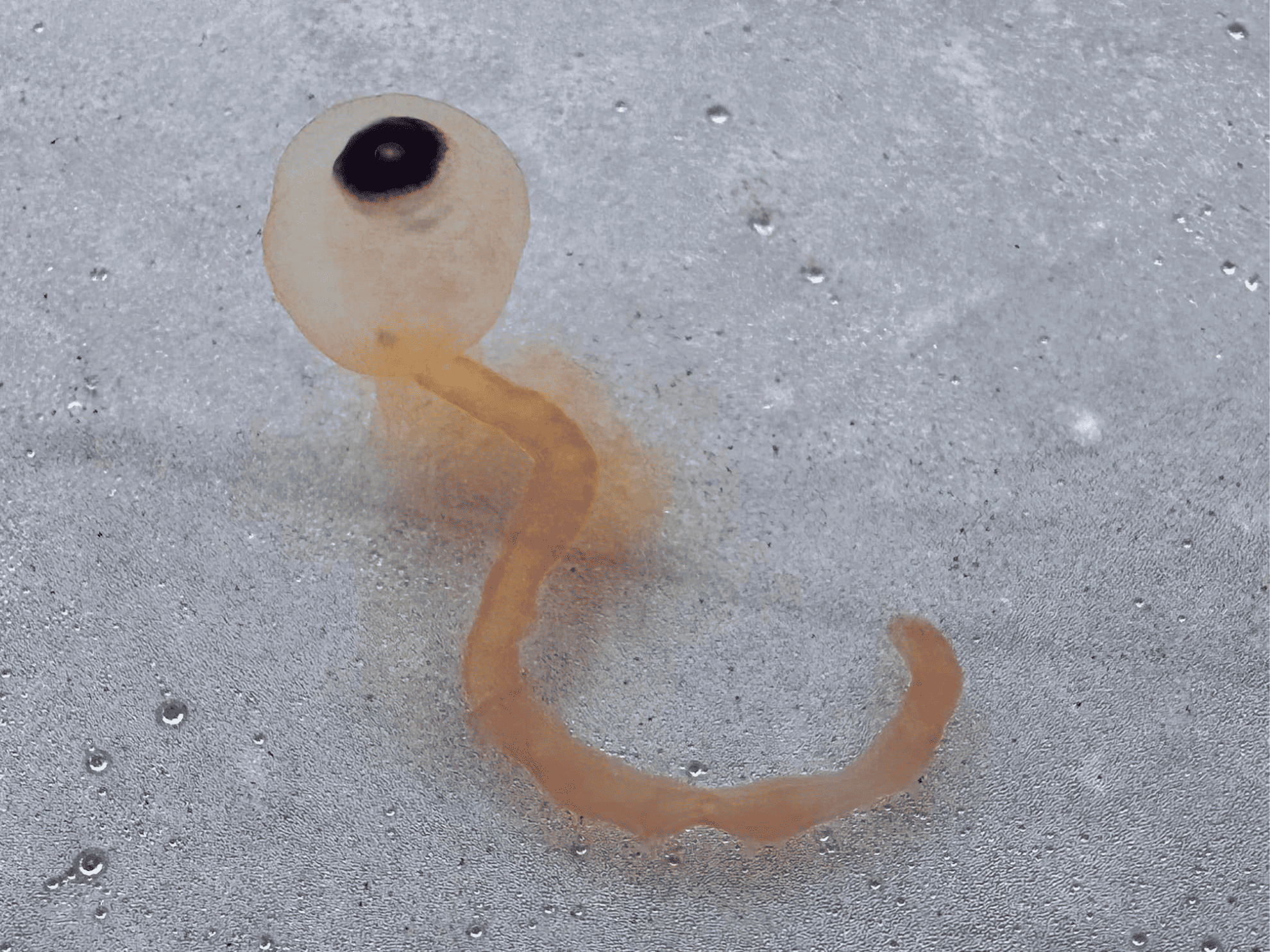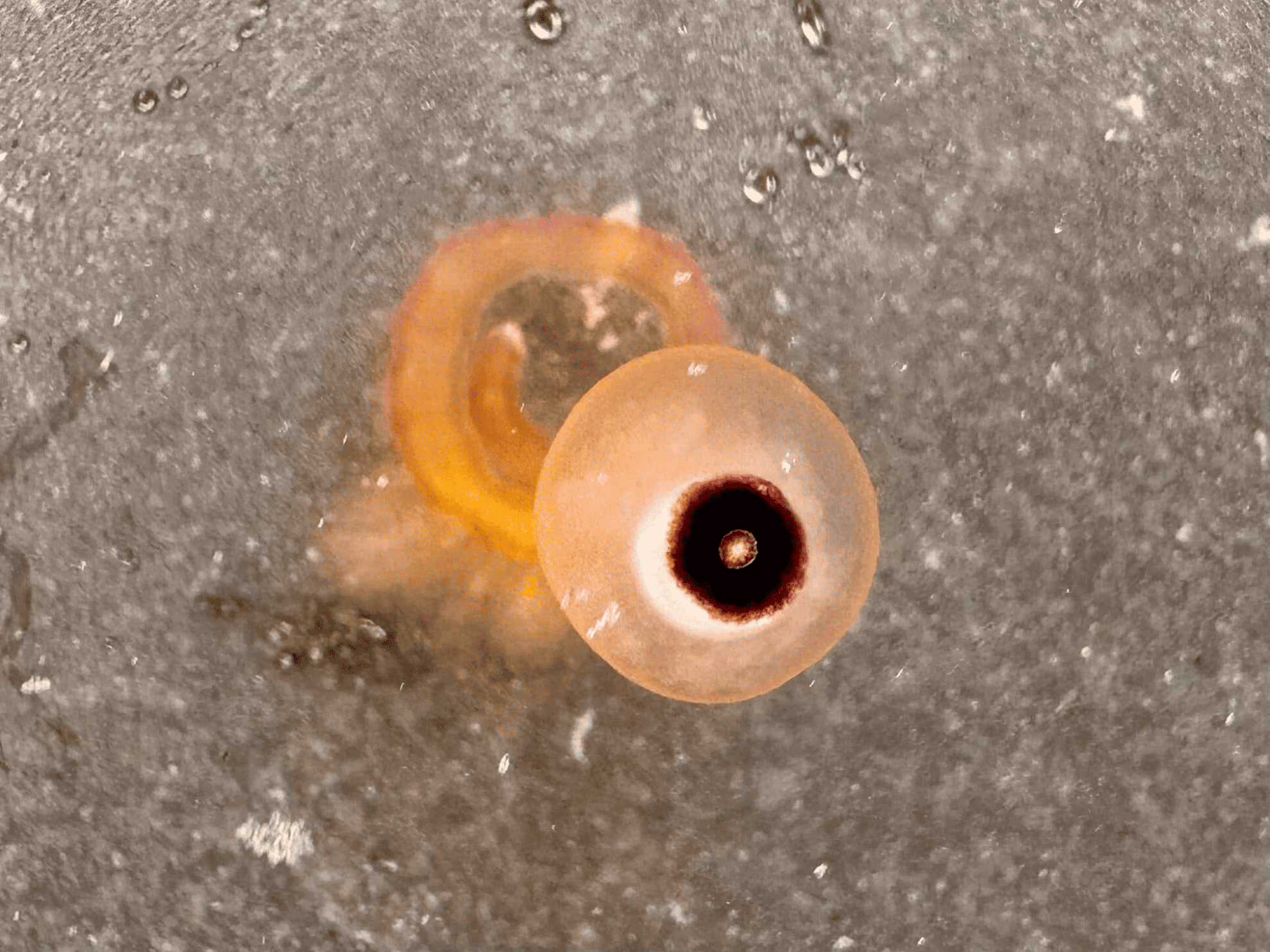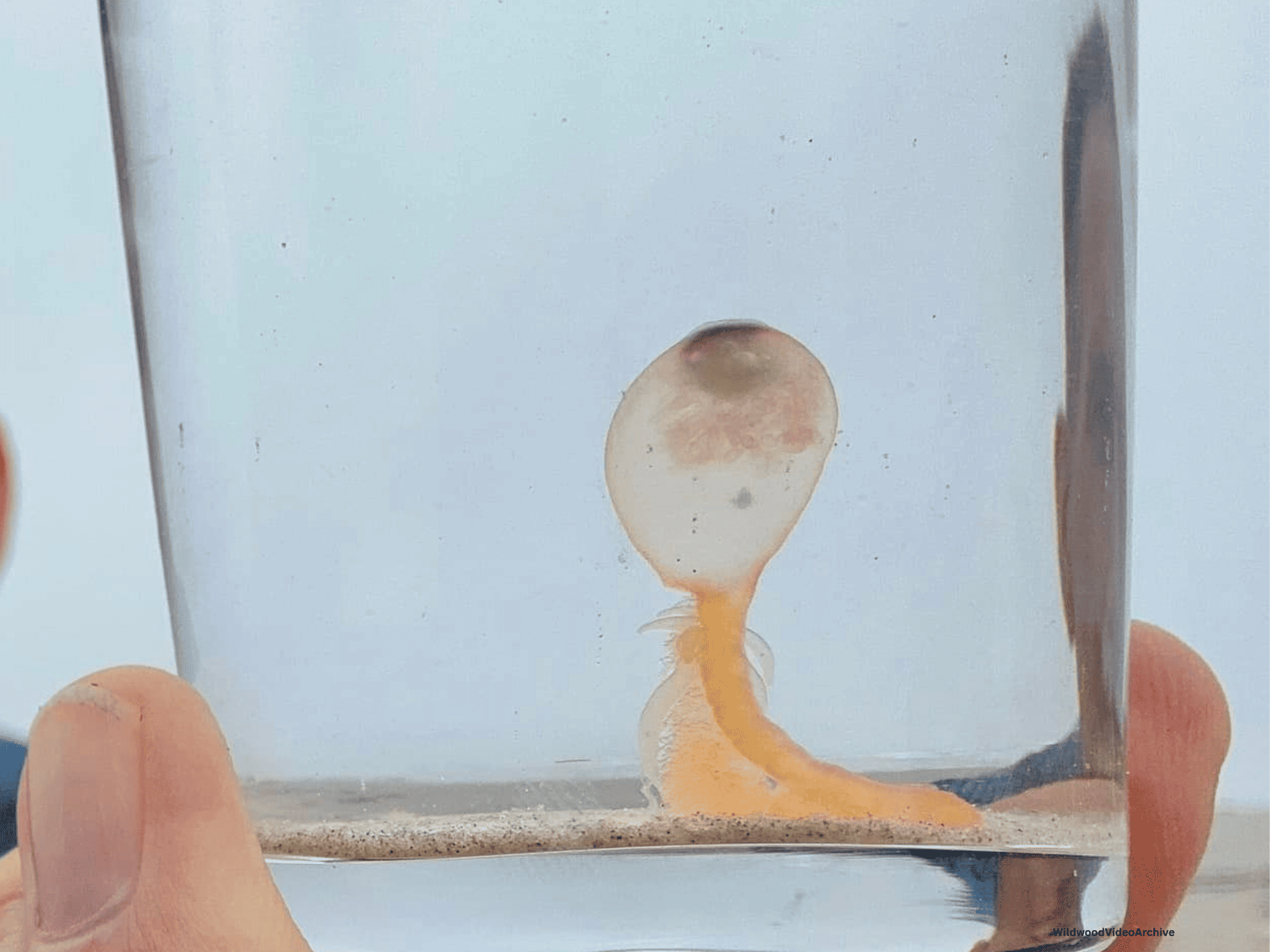Stinging “Spaghetti Monsters” Wash Up On Texas Beaches
Living by the shore offers us the privilege of encountering a diverse array of marine life. From graceful Sea Angels to ugly Monkfish, the things that wash up on our shores often pique our curiosity.

Stinging “Spaghetti Monsters” Wash Up On Texas Beaches
In Texas, residents are currently experiencing a similar phenomenon.
A recent post on Facebook by the Harte Research Institute for Gulf of Mexico Studies gained viral attention, showcasing a creature that resembled a floating disembodied eyeball.
While you might think this is something out of a horror movie, it’s really just a jellyfish.

Portuguese Man o’ Wars have been seen on our beaches before. They usually get caught in the golf stream and get pulled up to our beaches in the summer.
Scientifically classified as Rhizophysa, these thread-like jellies are commonly found in warm and temperate waters across the globe.

Despite their colloquial name, these creatures are not true jellyfish but rather siphonophores–a collective of animals functioning as one.
So how did these fascinating organisms end up on the shores of Texas? Most likely, storms and ocean currents have propelled these jellyfish-like creatures closer to the coast.

Similar to their infamous relatives, the Portuguese Man o’ War, these creatures possess a potent sting.
Thus, while it’s encouraged to admire their eerie beauty from a distance and capture a few photographs, it’s best to refrain from touching them unless you’re prepared to experience the discomfort of a sea eyeball’s sting.
What’s the strangest thing you’ve seen on the beach?
